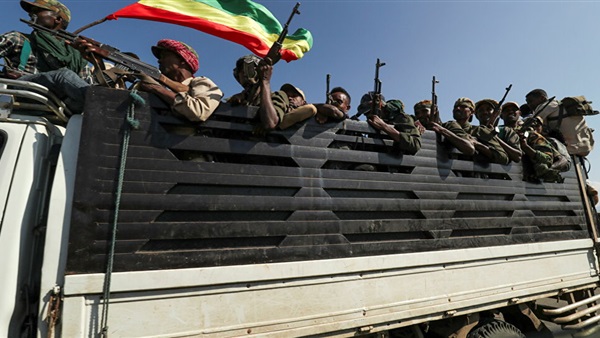Ethiopia, Eritrea, Somalia, Djibouti: The constant instability in the Horn of Africa

Over the past three decades, the Horn of Africa has acquired a bad reputation as a notoriously unstable subregion with a highly volatile socio-political framework.
No other part of the world has seen more peacekeepers
than the Horn, and no other part of the world has produced more refugees than
this region.
Owing to its strategic positioning right at the Red
Sea, foreign powers in the West, the Middle East and the Far East consistently
meddle in the region’s affairs to prop up their geopolitical influence and
leverage some form of control there.
Most recently, the Chinese built one of their largest
military bases abroad in Djibouti, which also hosts Camp Lemonnier – the US’s
largest permanent military base in Africa.
The effect of colonialism
No one can argue that the Horn of Africa was united
before the Europeans arrived. However, it is important to note that the
existing pre-colonial divisions were shallow and could have been easily
outgrown were it not for colonialism.
After the scramble for and consequent partition of
Africa, the Horn was split between the British, French and Italians. However,
when it came to drawing their colonial boundaries, the region was divided based
on imperial interests rather than those of the indigenous kingdoms and nations
present in the region; as a result, groups that were previously united found
themselves belonging to different countries or being bundled with rival tribes,
kingdom and clans under one country.
This led to a situation where many tribes and clans
felt out of place, and this can be directly linked to the separatist movements
we saw in the region after the colonial period.
Furthermore, European powers introduced wildly
distinct systems of governance, education and language in their respective
territories. This effectively rendered the formerly united people of this
region somewhat incompatible.
Post-colonialism: The Cold War
A period of relative calm came after the colonial
period, but it did not take very long before the region was struck by yet
another storm – the Cold War.
There was an unregulated influx of guns and arms from
either side of the Cold War as they sought to support their proxies in the
region, which included both rebel movements and governments. There was also a
rise of dictators supported by either side of the Cold War, such as Ethiopia’s
Mengistu and Somalia’s Siad Barre.
This cocktail of events opened room for further
instability as more rebel groups with easy access to arms sought to remove
these dictators. Eventually, when the Cold War ended, there was a readjustment
of power, as many dictators, lacking support from their allies, were eventually
toppled. However, the toppling of dictators in some instances led to power
vacuums and further escalated civil wars in countries such as Somalia.
Competing powers
The region is carved by two competing groups:
On one side is the Saudi-Emirati axis vying for
influence and control for the Red Sea and port regions, this influence is
mostly concentrated in Eretria, Djibouti, and to some extent Somalia.
On the other is Qatar, mainly stationed in Somalia,
who, through alleged back dealings, is trying to control the most fractured
country in the region.
From the early 2000s, these two groups sought to
extend their influence in the region in a bid to secure their short and long
term interests.
However, the competition has since escalated in the
wake of the 2017 Gulf Crisis among members of the Gulf Cooperation Council
(GCC) and quickly morphed into some kind of Cold War in the Gulf. Riyadh and
Abu Dhabi want to maintain the status quo in the region, whereas Doha is
employing the opposite strategy and agenda of the Saudi-Emirati coalition.
Following the fallout of the Gulf Crisis, Somalia’s
claims to be neutral was challenged by Riyadh and Abu Dhabi. In response, the
Saudis and Emirates stepped up efforts to increase their influence in Somalia,
thereby weakening and uprooting their competitor Qatar. All in retaliation to
Somalia’s proclaimed neutrality. This dangerous game of pitting one against the
other and using instability as a currency for influence may be the beginning of
another wave of instability in the region.
Inter-regional issues
Ethiopia’s Grand Renaissance Dam (GERD) project is
proving to be a catch-22 situation, where involved parties (Ethiopia, Egypt and
Sudan) are stuck in roundabout talks and disagreements, renewing and worsening
tensions between these countries.
In neighbouring Ethiopia and Djibouti, the Chinese are
taking centre stage. China increased its targeted investment in infrastructure
projects such as roads and railways and recently opened one of its largest
overseas military bases in Djibouti. Its mere presence attracts suspicion
especially from the west and hence could be an impending cause of instability
in the region.
But the biggest cause of instability in this region
comes from within.
In the past half-century, the people of Ethiopia have
suffered, first, from a personal autocracy, and, subsequently, from the
ill-considered and poorly founded rule of two self-proclaimed revolutionary
regimes.
North of the border, the people of Eritrea endured 30
years of warfare only to end up with a dictatorial leadership that has betrayed
the democratic promise of the struggle, and the Somali people have been
afflicted by misrule and anarchy dominated by the brutal self – interest of
warlords and corrupt leaders.
The failure of the political elites at leadership may
be one of the most notable commonalities across the Horn of Africa region and
can be directly traced to the instability associated with this region. The rise
of ‘kingmakers’ such as Afweki of Eritrea may even further threaten any
progress that has been made so far.
Bottom line
This region can only be described as one at war with itself, owing to a number of issues from tribal and clan dynamics to historical injustices. Therefore, the solution for instability should be sourced from within – as only the insiders can truly understand and contextualise the full extent of their problems.





